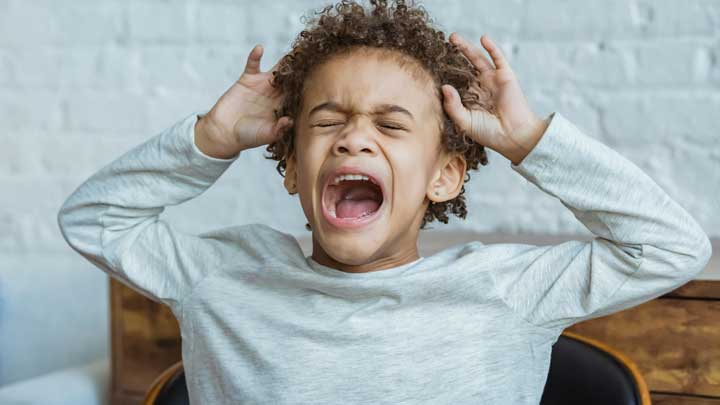
Why Talking Isn’t Enough: Walk the Talk in Parenting
Children don’t follow advice—they follow behavior. If you want a child who reads, listens, and respects, it starts with how you live. Here’s how to align your actions with your expectations.
Home > Online Counselling > Clinical Behavior Disorder > Panic Disorder

Does your child suddenly complain of chest pain, feel dizzy, or think something terrible is about to happen—with no clear reason? They may be experiencing a panic attack. Panic Disorder in children is a serious anxiety condition marked by unexpected and repeated episodes of intense fear. With early support and treatment, children can learn to manage panic and regain control of their emotional and physical well-being.

Oscar-winning actress Emma Stone has openly discussed her struggles with Panic Disorder, which began in childhood. By seeking therapy and developing coping strategies, she learned to manage her symptoms, allowing her to excel in her career. Stone’s story inspires countless individuals to seek help and embrace their potential. Personality Report of Oprah Winfrey

Renowned actor Johnny Depp has battled Panic Disorder throughout his life. By using his creativity as an outlet and engaging in professional therapy, he has transformed his anxiety into powerful performances. Depp’s openness about his journey encourages others to view anxiety as a challenge they can overcome. Personality Report of Johnny Depp

Global music icon Ariana Grande has spoken candidly about her experiences with Panic Disorder following traumatic events. Through therapy and mindfulness practices, she has learned to manage her anxiety while continuing to inspire millions with her music. Her story exemplifies the resilience needed to thrive despite mental health challenges. Personality Report of Ariana Grande
Panic Disorder is an anxiety disorder characterized by sudden, repeated panic attacks—intense periods of fear that come on quickly and without warning. These episodes often include physical symptoms like a racing heart, shortness of breath, dizziness, or chest pain. In children, these attacks can be terrifying and often misunderstood. In simple terms, a child with Panic Disorder might feel like they’re dying or losing control, even when no danger is present. The fear of future attacks can make children avoid school, social settings, or physical activity.
Children with Panic Disorder may not be able to explain what’s happening, but the symptoms are real and intense. Watch for:
To qualify as Panic Disorder, the child must have recurrent panic attacks and persistent fear of future attacks or behavioral changes to avoid them.
Panic Disorder is influenced by a mix of biological, psychological, and environmental factors. These may include:
While the first attack may be unexpected, the fear of having another one can set off a cycle of avoidance and hyper-awareness that sustains the disorder.
Panic Disorder can disrupt every aspect of a child’s daily functioning if left untreated. Key areas affected include:
The earlier the intervention, the better the outcome. With treatment, children can regain confidence, emotional control, and full participation in life.
When unrecognized or dismissed, Panic Disorder can spiral into deeper emotional issues. Children may withdraw from daily life, avoid experiences, and lose trust in their bodies or minds—leading to long-term isolation and fear.
With professional help, children can learn to recognize and manage panic attacks, reduce avoidance behaviors, and rebuild confidence. Many go on to thrive academically, socially, and emotionally—often becoming advocates for others facing similar fears.

Children don’t follow advice—they follow behavior. If you want a child who reads, listens, and respects, it starts with how you live. Here’s how to align your actions with your expectations.

Simplicity parenting emphasizes decluttering schedules and spaces to create a calm, joyful environment that nurtures children’s growth and creativity.

Many parents silently suppress their emotional needs, believing caregiving leaves no space for self-care. Here’s why acknowledging those needs is vital for the whole family.

Faith-based parenting integrates religious teachings and practices into daily life, nurturing a child’s moral compass and emotional resilience.

Conscious parenting involves mindfulness, empathy, and being present with your child to foster emotional resilience and mutual understanding.
Panic Disorder is highly treatable in children with the right combination of therapy, education, and, in some cases, medication. Effective options include:
Collaborative care between family, school, and clinicians builds confidence and long-term recovery.
Daily strategies can help children build confidence and reduce panic attacks. These include:
Consistency, patience, and positive reinforcement at home help reinforce the progress made in therapy sessions.
Our parenting style quiz helps you understand how your reactions may influence your child’s panic response. Are you providing safety without reinforcing avoidance? Based on your style, the quiz offers insights to support brave behaviors, reduce panic cycles, and build emotional strength in your child—one step at a time.
Panic Disorder may cause terrifying moments, but it doesn’t define your child’s life. With education, treatment, and your steady support, they can learn to face fear with courage, manage symptoms, and live a vibrant, full life. Your belief in their strength is the first step toward healing.
